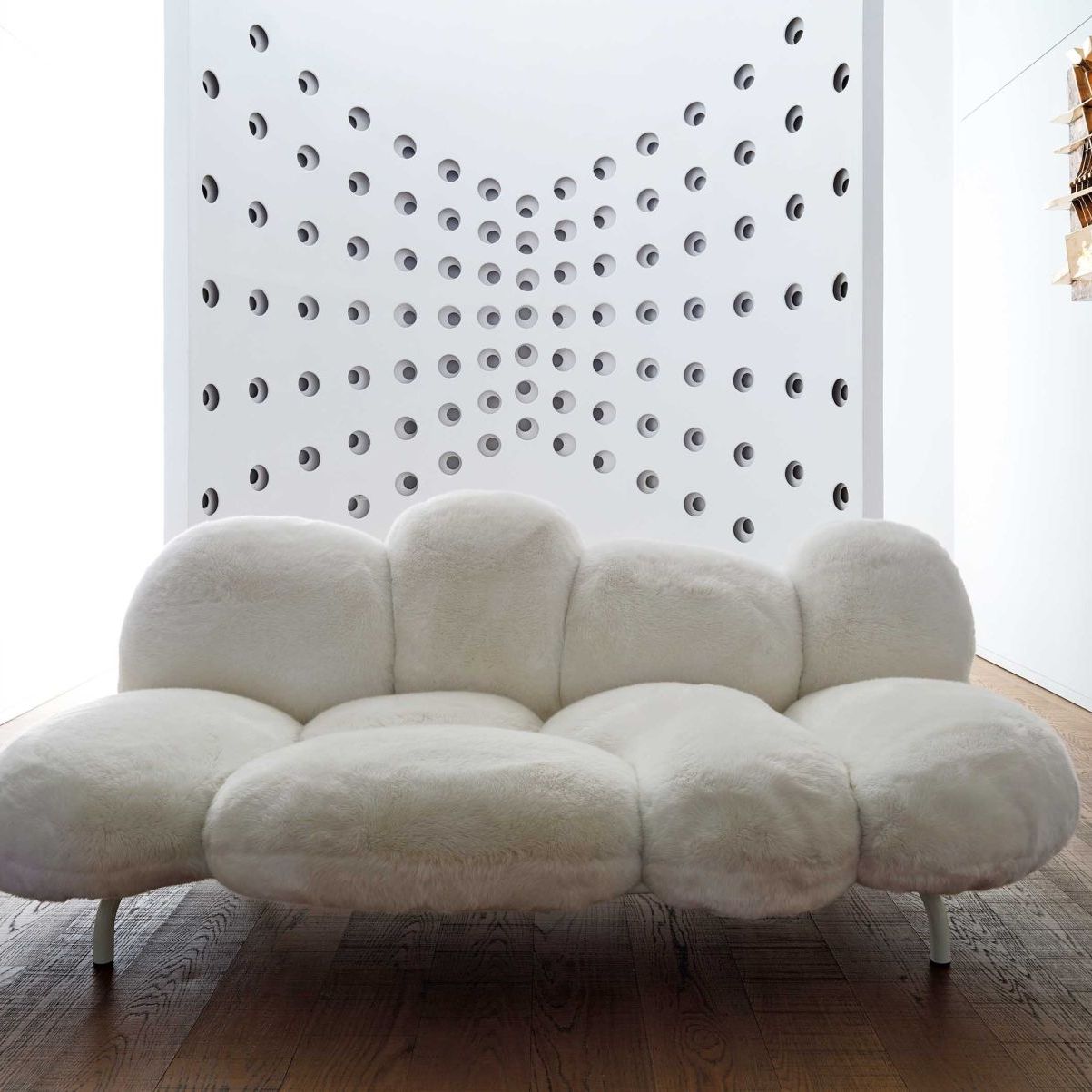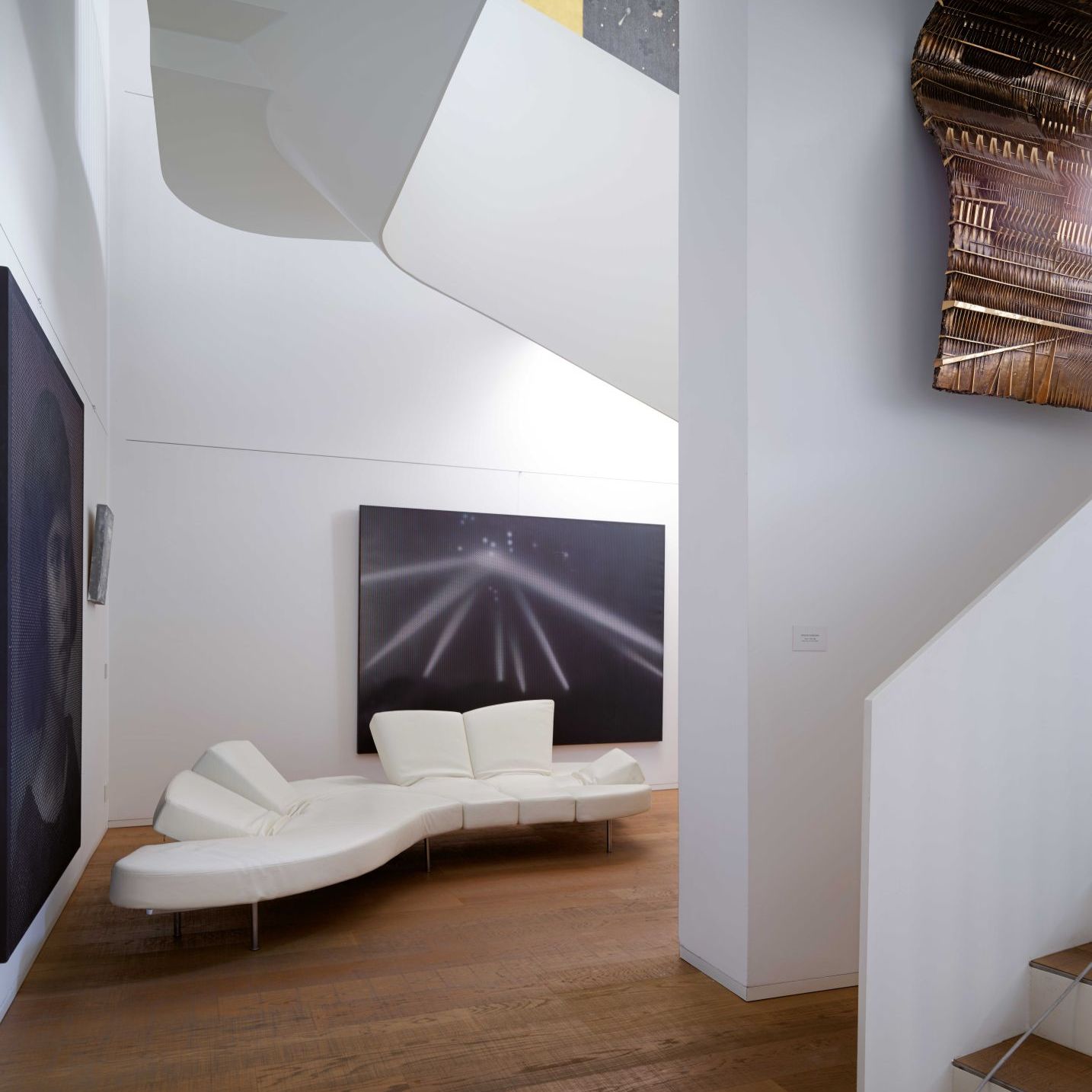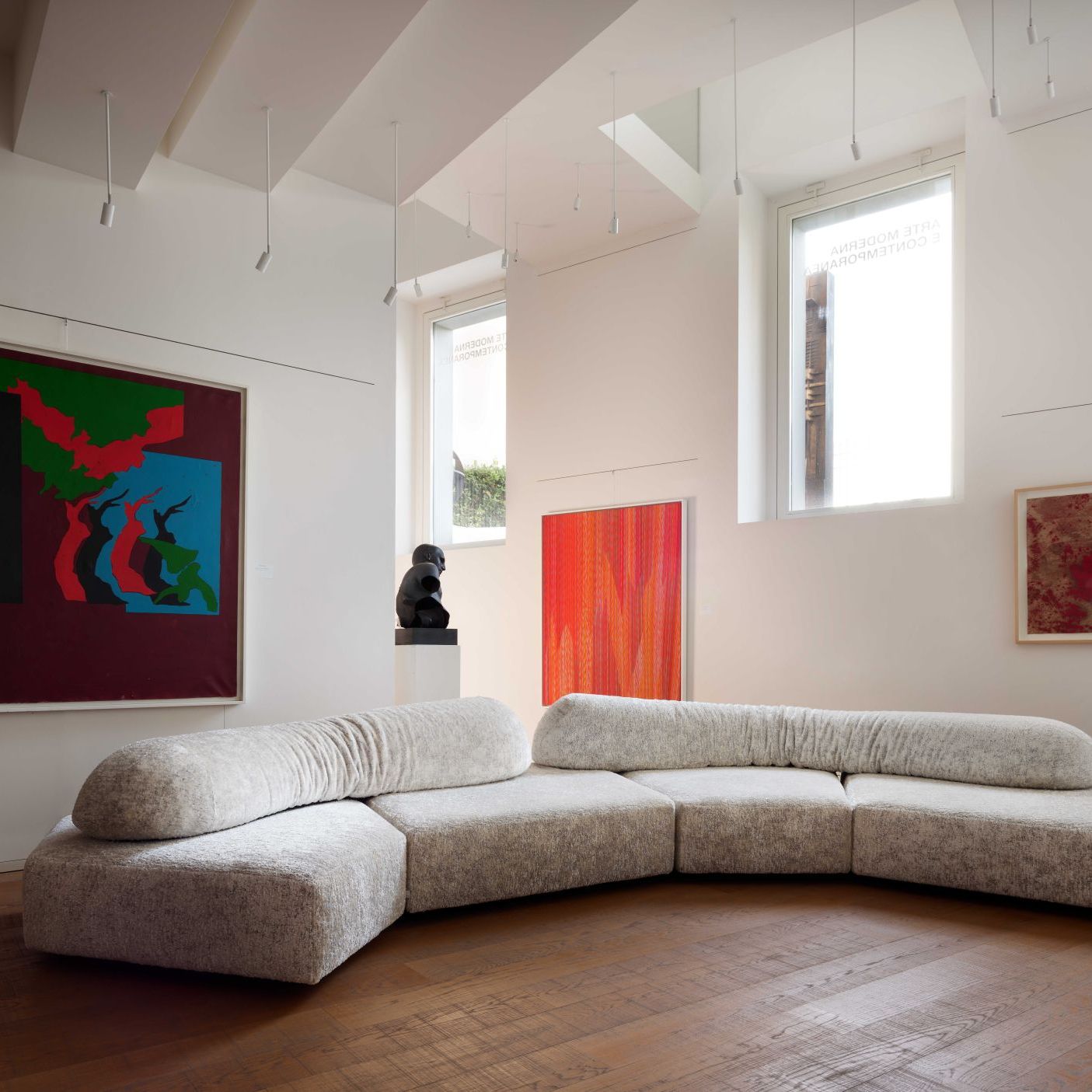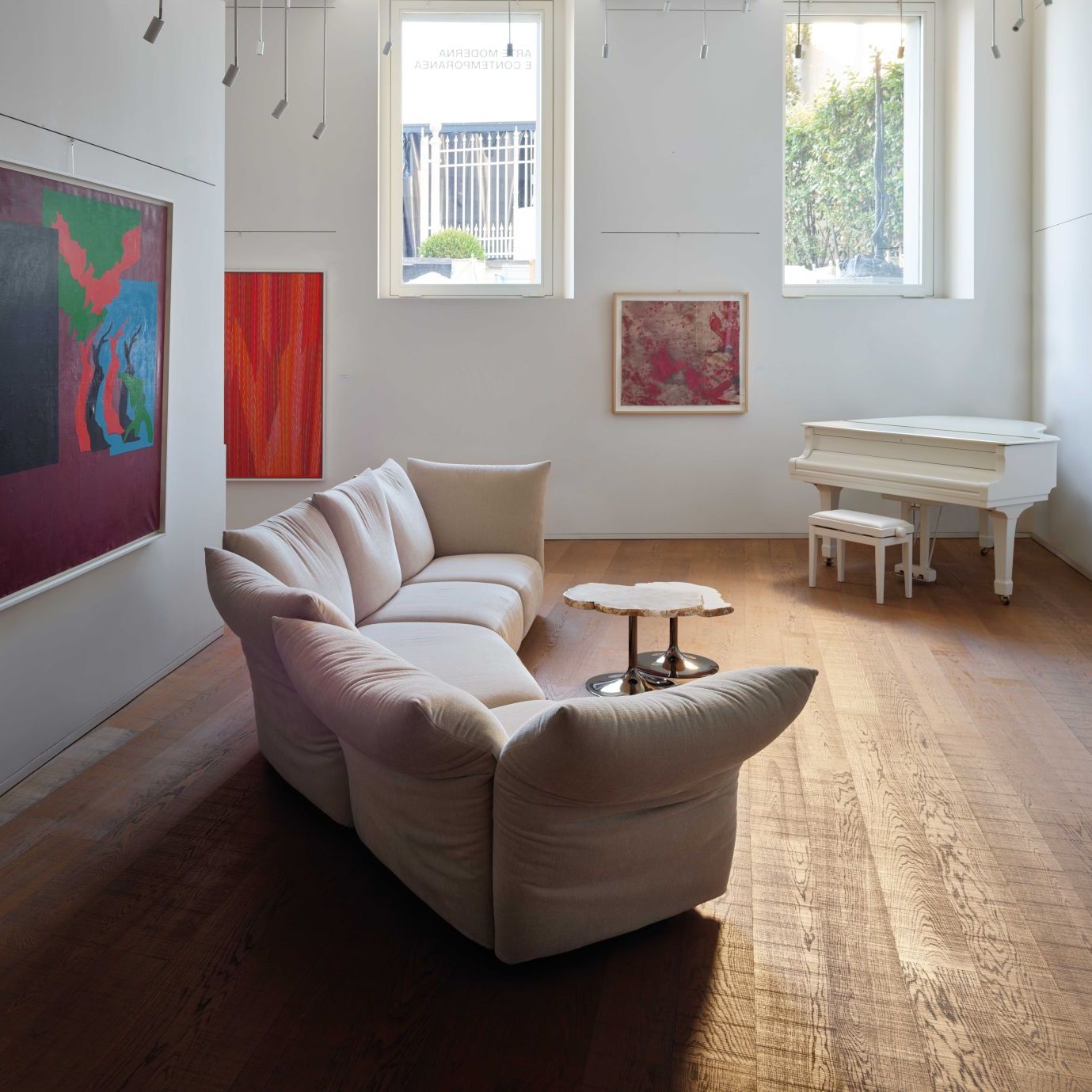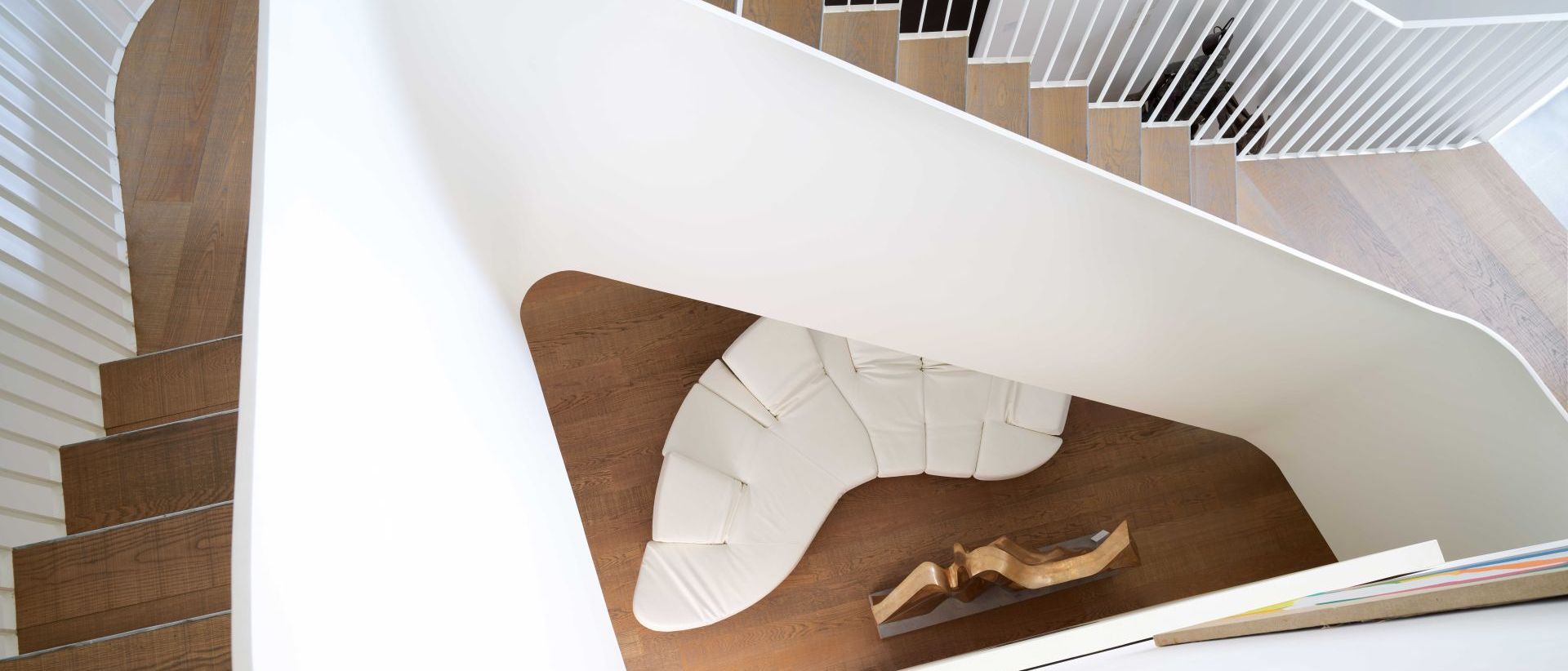
Flap in one of the rooms of the gallery.
January 2024
Laura Arrighi
A life as a collector
As Edra Magazine steps into Tornabuoni Arte, it is welcomed by the silence of a neutral, bright white space, where diffuse sunlight evenly glints across all surfaces. A floating staircase that visually connects the three floors of the building leads us downstairs, and we bump into art along the way. The place exudes a cosy vibe; we walk next to a Mitoraj, two Fontanas, so close we could rub shoulders with them. This is the beauty of the gallery: unlike a museum, it has an intimate dimension, and the relationship between the visitor and the work of art is deeper. Roberto Casamonti, the owner, is sitting at his desk, surrounded by books, catalogues and paintings, waiting for us. Tornabuoni Arte was born in Florence in 1981 from the passion that he inherited from his collector father. Over the years, the gallery, which is headquartered in Lungarno Cellini, Florence, opened new branches in Milan, Forte dei Marmi, as well as foreign branches in Crans-Montana, Switzerland, Paris and London. Once a year, the galleries set up a dedicated collection to display a selection of great international artists of the twentieth century, such as: Basquiat, Christo, Kandinsky, Miró, Picasso and Warhol; next to the main Italian artists of the early and late twentieth century, including Balla, Boetti, Burri, De Chirico, and a few pieces by contemporary artists. Designed by Studio Archea, the Florence gallery is built on the remains of an old builders merchant and occupies several rooms and areas, in a concatenation of exhibition spaces. The staircase that runs from the top to the bottom of the block is the core of the architecture, providing an uninterrupted view and diffusing the sunlight around. Devised down to the tiniest detail to create a proper relationship between art and architecture, between the exhibition building and the works of art, the place is the ideal showcase for displaying Edra products in a special installation. The art interacts with some best-sellers. Perhaps, in a potential role swap, those furnishings themselves might become objects of art.
Beauty is important, it’s always a winner, and you can never have enough of it. A collector is a lover of beauty, in all its shapes and sizes
Many of our clients are collectors. This made us think. Do collectors maybe look for a common thread between art and interior design, even at home?
Nowadays, modern and contemporary art have an advantage over ancient art, particularly if we relate it with interior design. Young people’s houses often respond to tastes and needs that are closer to our age. This leads them to choose modern and contemporary works that perfectly interact with everyday products from the same time dimension.
Is it just a matter of taste or is it also a different approach to the exhibition and enjoyment of art?
Generally speaking, it is certainly a matter of aesthetics. As it happens, architects and interior designers give specific advice about what art should be bought. But a house is such a personal and intimate universe that it must fit the owner like a glove. A house must feel like home to the people who live in it. The furniture decision probably depends somewhat on a person’s profile, and if he or she is someone who loves art, then they will relate to and will love your contemporary furnishings. I would rather call it a pursuit of beauty. Beauty is important, it’s always a winner, and you can never have enough of it. A collector is a lover of beauty, in all its shapes and sizes. Needless to say, beauty must go hand in hand with function in interiors, which must be comfortable, high quality. At home, I had fun combining modern and contemporary décor. I put works by Marino Marini and Arnaldo Pomodoro next to ancient furniture and décor. I blended the ingredients really well, with a clever touch. However, with its incredible paintings, art comes after the house has been built and decorated.
Has the concept of displaying art at home changed in any way?
A collector’s joy is not a private fact, it never has been. Works of art become like children, they are beauty collected over the years, and displaying them is a pride. For instance, I gathered my private not-for-sale collection, I gave it my name. It can be visited by appointment at the piano nobile of Palazzo Bartolini Salimbeni, on the way that connects Piazza Santa Trinita with Via Tornabuoni. I decided to choose some of the works of art that have passed through my hands, then gathered them together.
I slowly chose the pieces I am fondest of and that tell about my personal journey. I did that to make modern and contemporary art better known, even through book presentations, workshops, scholarships for young artists. I really love them and I would like to keep them in the family, but I feel the need to share them with people. I want to show the choices of a lifetime to make others value them too.
Do you have a favourite?
Don’t make me choose! Would you ever choose one of your children as your favourite? They are all works I am deeply attached to, for some reason or other. There’s a painting by De Chirico I am obsessed with. Fontana is one of the artists to whom I owe most, I loved his art when barely anyone wanted it. Then, Dorazio … I don’t know, really.
 |
Laura Arrighi Architect with a PhD in Design, and freelance web writer and editor. She mainly works in interior decoration, design and fashion and has a special interest in the hybridization of different disciplines. She juggles writing, research, teaching and design, as she works for public institutions and some of the most important Italian architectural firms. |





